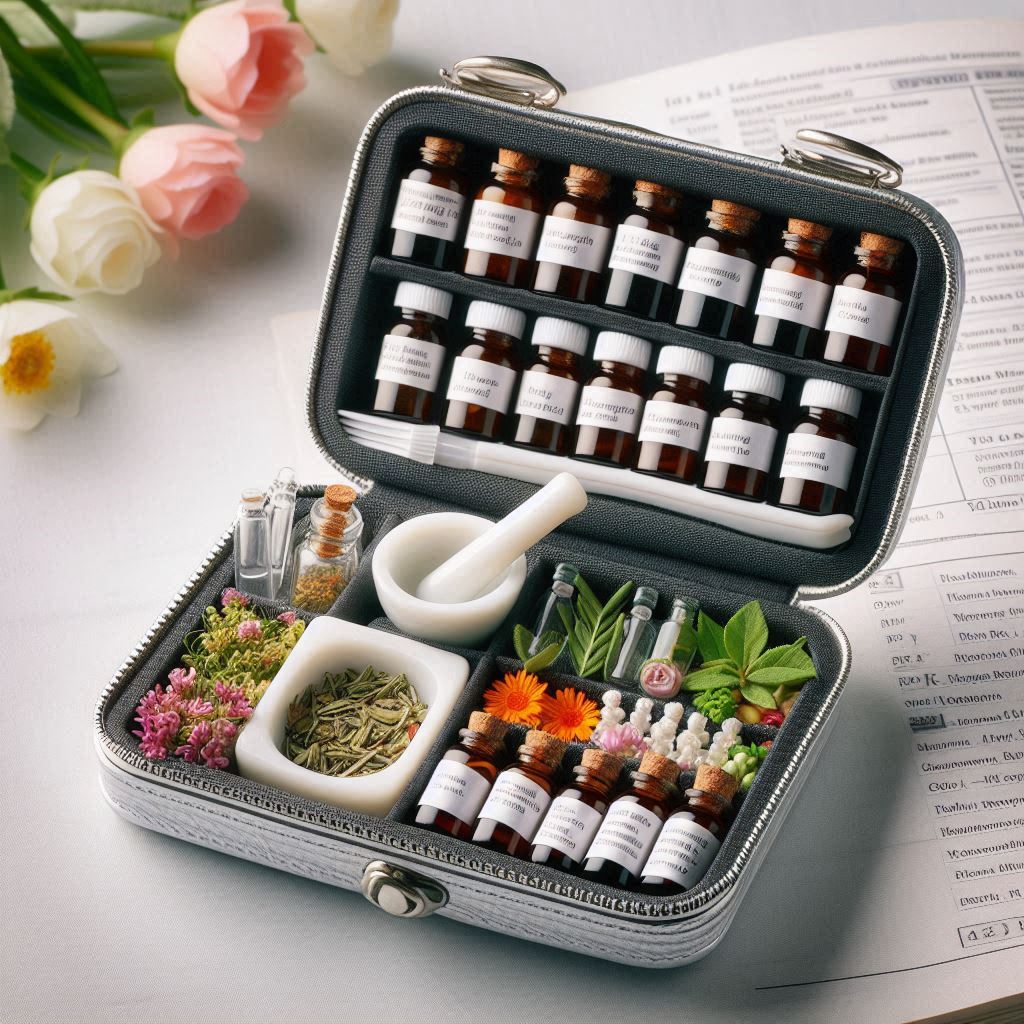Table of Contents
Homeopathy revolves around using natural substances in highly diluted forms to aid the body’s healing process. Use of homeopathic remedies for first aid at home spans over centuries. Of all its intriguing aspects, the principle of “like cures like” stands out – suggesting that substances causing symptoms in a healthy person can, when diluted, treat similar symptoms in illness. This fascinating approach pushes homeopathy beyond just a form of alternative medicine, interlinking it with nature and holistic wellness.
Tracing back to the 1790s, homeopathy finds its roots through Samuel Hahnemann, a German physician. He introduced the idea of treating patients with remedies that mimic their symptoms. Over the decades, homeopathy has weathered its share of skepticism and acceptance, shaping a rich history that amalgamates evidence-based practices with traditional wisdom.
In today’s fast-paced world, homeopathy steps in as a gentle yet effective approach to health management. Its niche in modern wellness is growing, driven by a surge in interest towards natural and integrative health solutions. More than just a complementary choice, it offers a spectrum of applications from acute illnesses to chronic conditions, positioning itself as a significant player in holistic healthcare.
Why choose homeopathic remedies for first aid?
Homeopathy offers some compelling advantages when it comes to first aid.
- Its gentle nature makes it ideal for all age groups, from kids to the elderly, without worrying about adverse reactions. A key benefit of having a homeopathic first aid kit is versatility. These remedies cover a range of common injuries and ailments, from bumps and bruises to minor burns.
- In emergency situations, homeopathic remedies often work fast. They focus on prompting the body’s natural healing response, which can be particularly useful in acute situations where time is of the essence. Moreover, these remedies have a long shelf life, ensuring that your first aid kit remains ready for use at all times without the worry of expiry.
- Practicality is another strength. The compact nature of homeopathic remedies means they fit neatly into any first aid kit, allowing room for other essential supplies. This makes them perfect companions for travel, hiking, or even just as a staple in your home medicine cabinet.
- Integrating homeopathy into your first aid setup doesn’t require you to overhaul your current arsenal of supplies. Instead, it complements existing solutions, providing additional options for treatment. It’s about expanding your toolkit, giving you more options to care for yourself and your loved ones effectively, and immediately, when needed.
Essential components of a homeopathic first aid kit
Building a well-rounded homeopathic first aid kit starts with identifying must-have remedies.
Arnica for aches and bruises, Hypericum for nerve injuries, and Calendula for skin healing are often staples due to their effectiveness. These can handle most common mishaps that might occur at home or on the go.
Potency selection can seem a bit daunting, but it’s all about picking the right strength to match your needs. For home use, common potencies like 30C or 200C are generally recommended as they provide an ideal balance for both acute and chronic symptoms. These potencies allow flexibility in addressing various situations without requiring advanced knowledge.
Aside from the remedies themselves, having a few complementary supplies can enhance your kit’s functionality. Think bandages, antiseptics, and even basic wound-care items. These help ensure that your kit is not only about homeopathy but also ready for immediate physical wound dressing, providing a holistic approach to first aid.
Creating a homeopathic first aid kit geared towards your specific needs involves understanding the unique requirements of your household. Whether you have young children, engage in outdoor activities, or simply want peace of mind, your choice of remedies and supplies should reflect your lifestyle priorities.
Administering homeopathic remedies safely
Navigating the use of homeopathic remedies requires understanding their safety profile. Generally, these remedies are considered safe when used appropriately, boasting minimal side effects due to their diluted nature. Nevertheless, it’s important to follow guidelines for each remedy to ensure effectiveness and avoid misuse.
Administering homeopathic remedies is straightforward. Typically, remedies are delivered as small pellets that dissolve under the tongue. For young children who might resist this, dissolving the pellets in a small amount of water can make administration easier. Consistency and timing matter, so ensuring regular intervals between doses helps maximise their effects.
Though homeopathy is gentle, taking basic precautions ensures you’re using the remedies effectively. Always store them in a cool, dry place, away from strong odours, as these can compromise the remedy’s efficacy. Keeping a detailed log of your symptoms and responses can also offer valuable insight for future treatments.
Safety doesn’t just stop at the remedies. It’s crucial to know when to use homeopathy and when professional medical advice is needed. Homeopathy works great for minor ailments, but more severe or persistent health issues might require conventional medical intervention. Recognising when to seek help is part of responsible homeopathic practice.
Homeopathic solutions for common injuries
Dealing with minor cuts and scrapes, Arnica and Calendula stand as reliable partners. Arnica helps reduce bruising and pain, while Calendula supports healing and prevents infection. Keeping these remedies accessible can speed up recovery from those inevitable bumps and nicks.
Burns and scalds often benefit from Urtica urens and Cantharis. Urtica helps manage pain and skin irritation, whereas Cantharis handles more extensive burns, alleviating discomfort significantly. Including these remedies ensures readiness for both kitchen accidents and sunburns.
Sprains and strains call for Ruta and Rhus tox. Ruta addresses tendon and ligament issues, making it ideal for those sudden twists and turns. Rhus tox works wonders when stiffness and soreness creep in after resting. Tailoring your kit with these remedies means quicker relief and restoration of mobility.
Insect bites and stings are often more an annoyance than anything else, though Ledum and Apis can mitigate discomfort effectively. Ledum works well for puncture wounds and stings, while Apis is great for swelling and allergic reactions. With these remedies at hand, you can enjoy the outdoors without worry.
If you are looking for remedies for Asthma, please click here to read our guide.
Customising your homeopathic first aid kit
Customisation is key when building a homeopathic first aid kit that suits your precise needs.
- Start by considering common issues you or your family encounter. Frequent headaches might mean adding Belladonna, while motion sickness could call for Cocculus.
- Family health history plays a pivotal role in shaping your kit’s contents. If allergies or certain medical conditions run in the family, stocking remedies like Histaminum for allergies might be beneficial.
- Exploring reliable resources is essential for enhancing your knowledge and confidence in using homeopathy. Books by experienced homeopaths or trusted online platforms can guide your remedy choices. These resources ensure your kit is not just a collection of remedies, but an informed assortment geared towards effective care.
Personalising your homeopathic first aid kit isn’t a one-size-fits-all task. It’s about reflection and adaptation, taking into account evolving needs and experiences, to create a truly functional and versatile safety net for minor health issues.
Purchasing quality homeopathic products
When looking to buy homeopathic remedies, online resources have become valuable allies. Websites with solid reputations for quality and authenticity, like established homeopathic pharmacies, offer a wide selection of remedies and detailed information about their use.
Shopping locally provides the benefit of immediate access, allowing you to get remedies when you need them most. Health food stores and pharmacies often carry a selection of homeopathic remedies. Look for stores known for their commitment to quality natural products.
Recognising quality in homeopathic products involves checking labels for the potency and manufacturing standards. Authentic remedies should have clear labelling and be produced by reputable companies committed to the principles of homeopathy, ensuring that what you use is both safe and effective.
Staying informed about available products and their sources lays the groundwork for building a reliable homeopathic first aid kit. Investments in quality not only support better outcomes but also enhance your confidence in using these remedies during minor health challenges.
The evolving role of homeopathy in first aid
Homeopathy is increasingly recognised as a significant part of the modern medical landscape, with its role in first aid continuously evolving. As more people look for natural and integrative solutions, homeopathy offers a complementary approach that fits well with existing medical practices.
Research is playing a crucial role in the growing acceptance of homeopathy. Studies are consistently aiming to explore and validate the effectiveness of these remedies, building a bridge between traditional homeopathic practices and contemporary scientific inquiry.
Staying updated on the latest developments in homeopathy can significantly benefit its users. Whether it’s through attending workshops, online courses, or subscribing to publications by leading homeopathic organisations, these resources ensure you remain informed about best practices and new innovations.
The journey of integrating homeopathy into your first aid repertoire is ongoing. Being proactive in learning and adapting to new trends will empower you to use these remedies more effectively, offering a comprehensive strategy to managing health in a more natural way.
Kay,
greenlifehub.com

